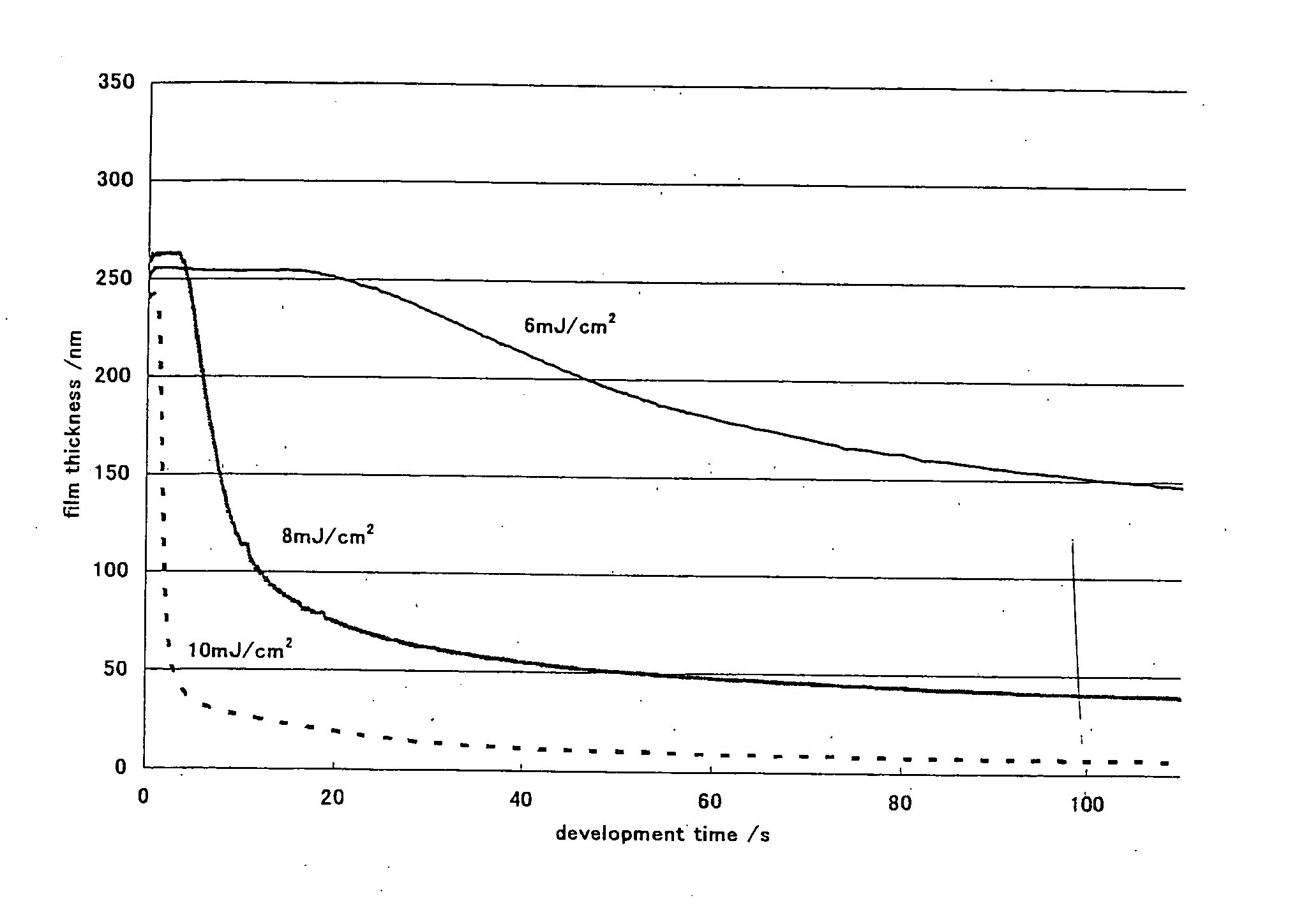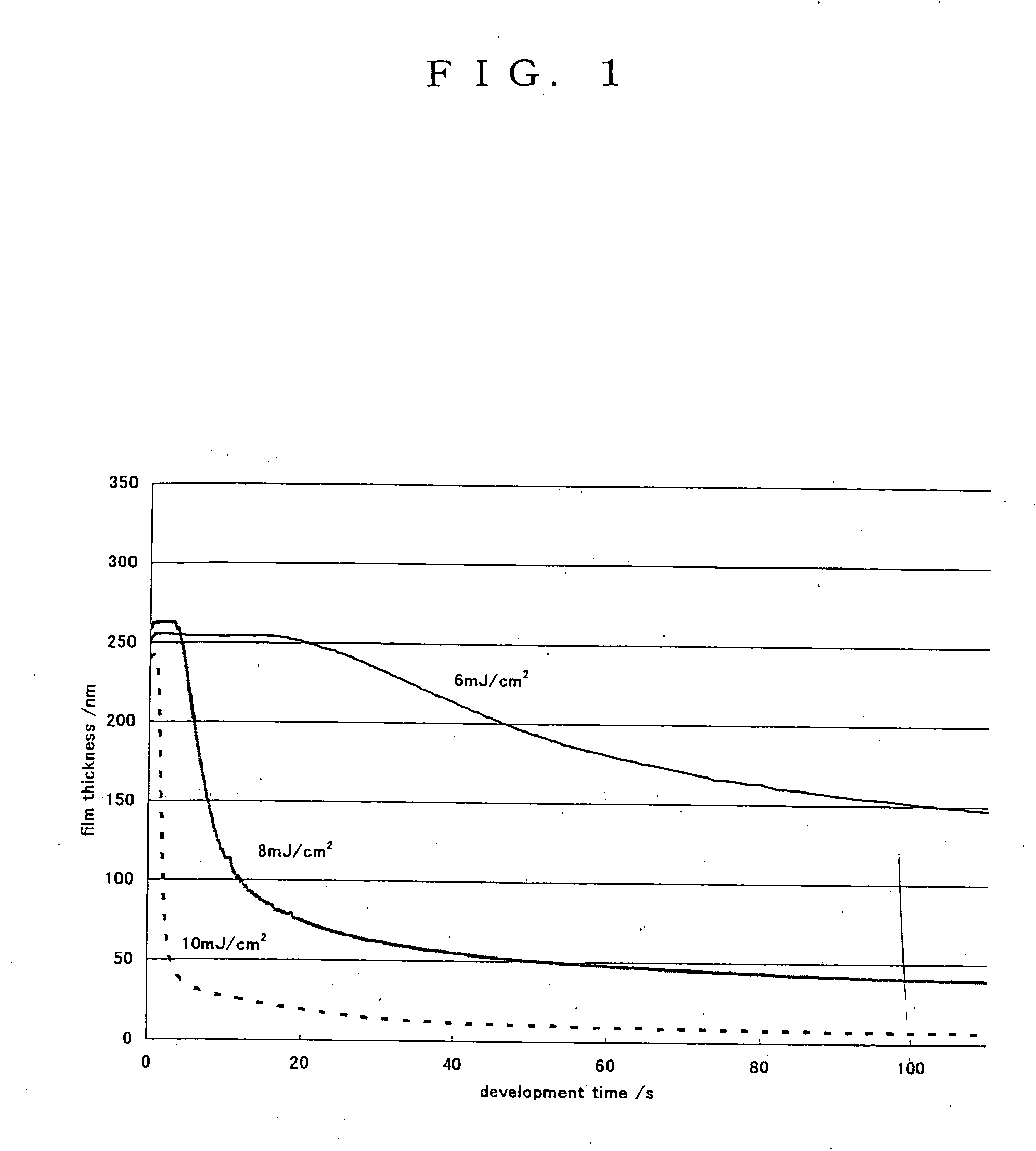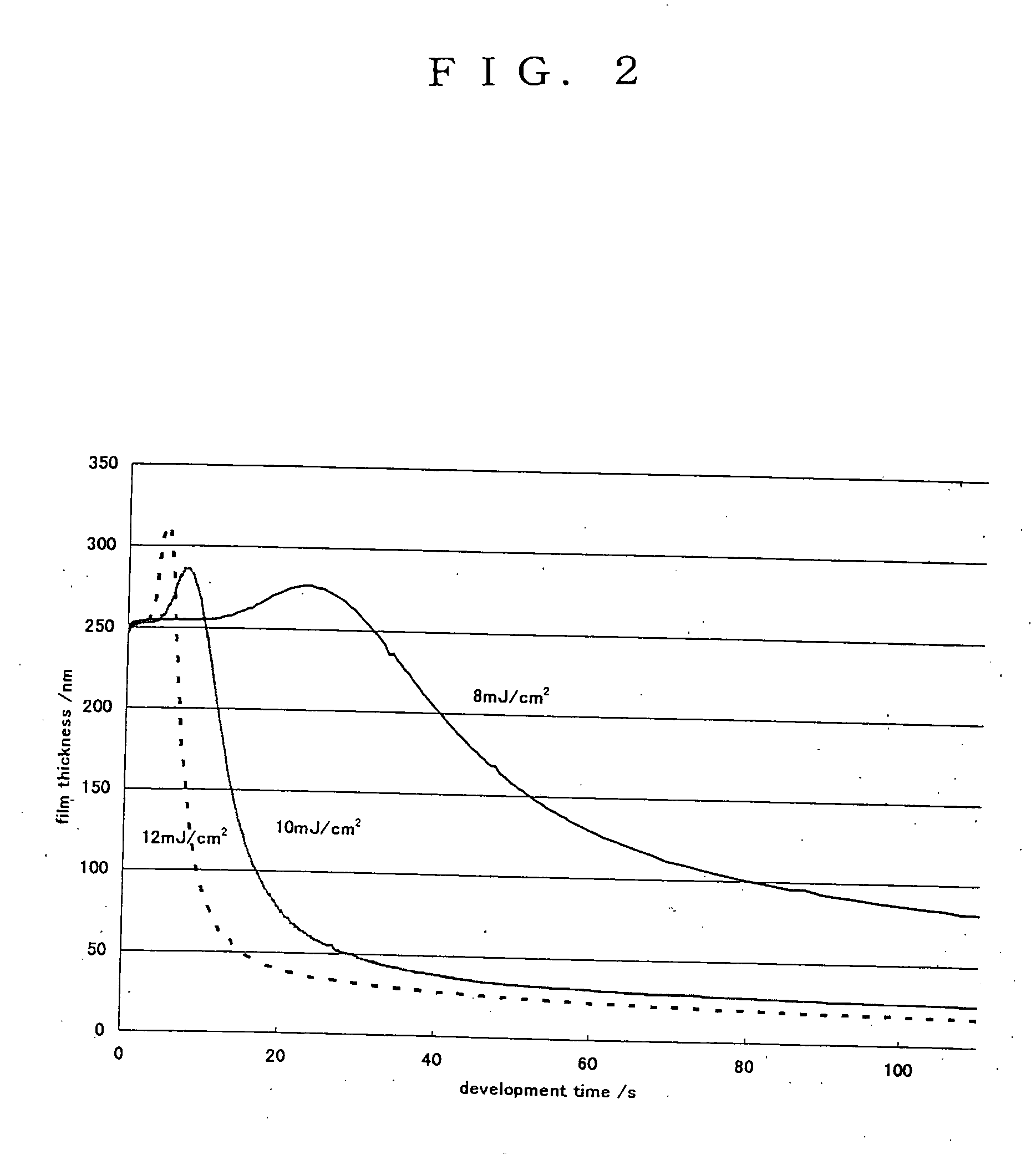Novel polymer, positive resist composition, and patterning process using the same
a technology of composition and polymer, applied in the direction of photosensitive materials, photosensitive materials auxiliaries/base layers, instruments, etc., can solve the problems of difficult to use novolac and polyvinyl phenol resin which have been used as a base resin for resists, and achieve excellent sensitivity, high resolution, and high sensitivity
- Summary
- Abstract
- Description
- Claims
- Application Information
AI Technical Summary
Benefits of technology
Problems solved by technology
Method used
Image
Examples
synthetic example 1
To 100 mL flask were added 8.2 g of methacrylic acid-3-ethyl-3-exotetracyclo[4.4.0.12,5.17,10]dodecanyl, 11.1 g of methacrylic acid 5-oxo-4-oxatricyclo[4.2.1.03,7]nonane-2-yl, 7.2 g of methacrylic acid 5-[3,3,3-trifluoro-2-hydroxy-2-trifluoromethyl propyl]bicyclo[2.2.1]hept-2-yl and 20 g of tetrahydrofuran as a solvent. This vessel was cooled to −70° C. under nitrogen atmosphere, and degasing under reduced pressure and nitrogen flowing were repeated 3 times. 0.2 g of AIBN was added as a polymerization initiator after elevating to a room temperature, and then it was elevated to 60° C. and reacted for 15 hours. This reaction solution was precipitated in 500 ml of isopropyl alcohol, the obtained white solid was taken by filtration and then dried under reduced pressure at 60° C., and 22.1 g of white polymer was obtained.
The obtained polymer was analyzed by 13C, 1H-NMR and GPC measurement, and the following results were obtained.
Copolymerization Ratio
methacrylic acid-3-ethyl-3-exo...
synthetic example 2
To 100 mL flask were added 9.5 g of methacrylic acid-3-ethyl-3-exotetracyclo [4.4.0.12,5.17,10]dodecanyl, 10.0 g of methacrylic acid 3-oxo-2,7-dioxa-tricyclo[4.2.1.04,8]-9-nonyl, 7.2 g of methacrylic acid 5-[3,3,3-trifluoro-2-hydroxy-2-trifluoromethylpropyl bicyclo[2.2.1]hept-2-yl and 20 g of tetrahydrofuran as a solvent. This vessel was cooled to −70° C. under nitrogen atmosphere, and degasing under reduced pressure and nitrogen flowing were repeated 3 times. 0.2 g of AIBN was added as a polymerization initiator after elevating to a room temperature, and then it was elevated to 60° C. and reacted for 15 hours. This reaction solution was precipitated in 500 ml of isopropyl alcohol, the obtained white solid was taken by filtration and then dried under reduced pressure at 60° C., and 21.3 g of white polymer was obtained.
The obtained polymer was analyzed by 13C, 1H-NMR and GPC measurement, and the following results were obtained.
Copolymerization Ratio
methacrylic acid-3-ethyl-3-e...
synthetic example 3
To 100 mL flask were added 6.4 g of exo-form methacrylic acid 2-ethylbicyclo[2.2.1]heptane-2-yl, 10.8 g of methacrylic acid-3-hydroxy-1-adamantyl, 7.2 g of methacrylic acid 5-[3,3,3-trifluoro-2-hydroxy-2-trifluoromethyl propyl]bicyclo[2.2.1]hept-2-yl and 20 g of tetrahydrofuran as a solvent. This vessel was cooled to −70° C. under nitrogen atmosphere, and degasing under reduced pressure and flowing of nitrogen flowing were repeated 3 times. 0.2 g of AIBN was added as a polymerization initiator after elevating to a room temperature, and then it was elevated to 60° C. and reacted for 15 hours. This reaction solution was precipitated in 500 ml of isopropyl alcohol, the obtained white solid was taken by filtration and then dried under reduced pressure at 60° C., and 20.0 g of white polymer was obtained.
The obtained polymer was analyzed by 13C, 1H-NMR and GPC measurement, and the following results were obtained.
Copolymerization Ratio
methacrylic acid 2-ethylbicyclo[2.2.1]heptane-2-...
PUM
| Property | Measurement | Unit |
|---|---|---|
| wavelength | aaaaa | aaaaa |
| wavelength | aaaaa | aaaaa |
| temperature | aaaaa | aaaaa |
Abstract
Description
Claims
Application Information
 Login to View More
Login to View More - R&D
- Intellectual Property
- Life Sciences
- Materials
- Tech Scout
- Unparalleled Data Quality
- Higher Quality Content
- 60% Fewer Hallucinations
Browse by: Latest US Patents, China's latest patents, Technical Efficacy Thesaurus, Application Domain, Technology Topic, Popular Technical Reports.
© 2025 PatSnap. All rights reserved.Legal|Privacy policy|Modern Slavery Act Transparency Statement|Sitemap|About US| Contact US: help@patsnap.com



